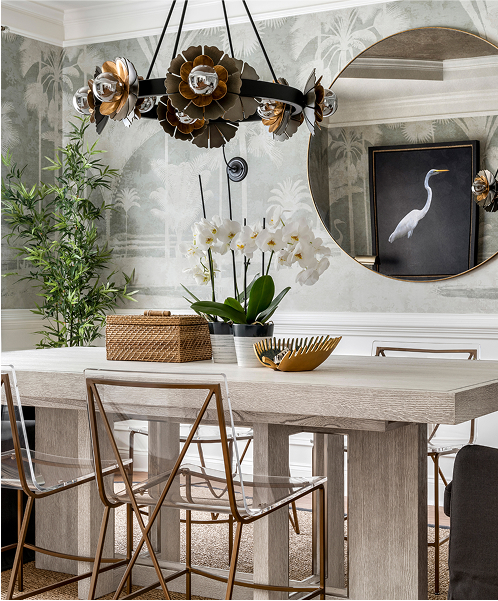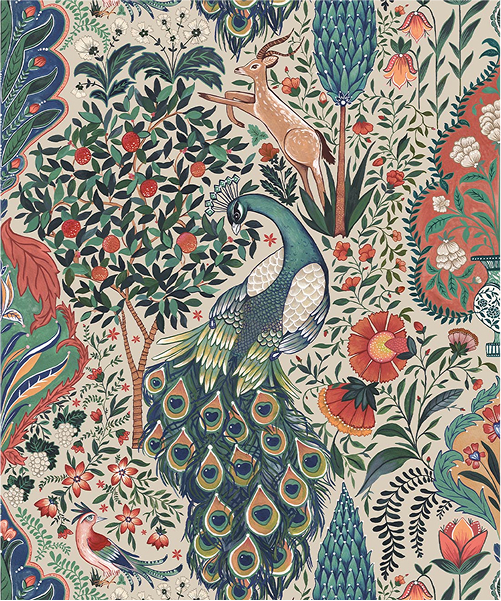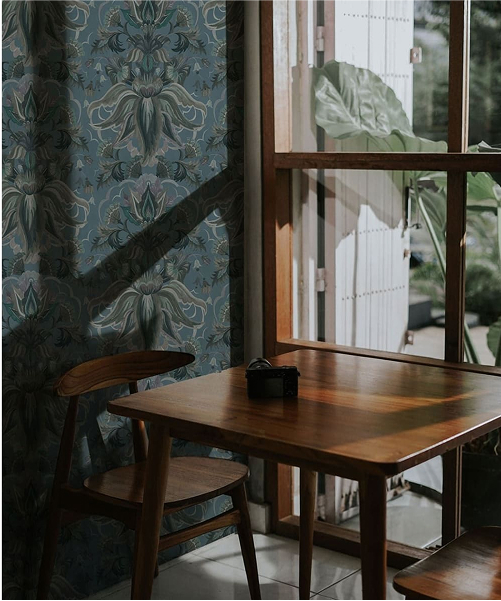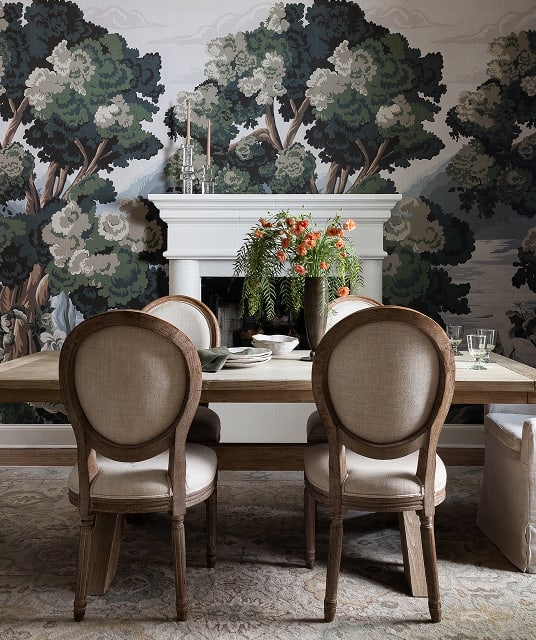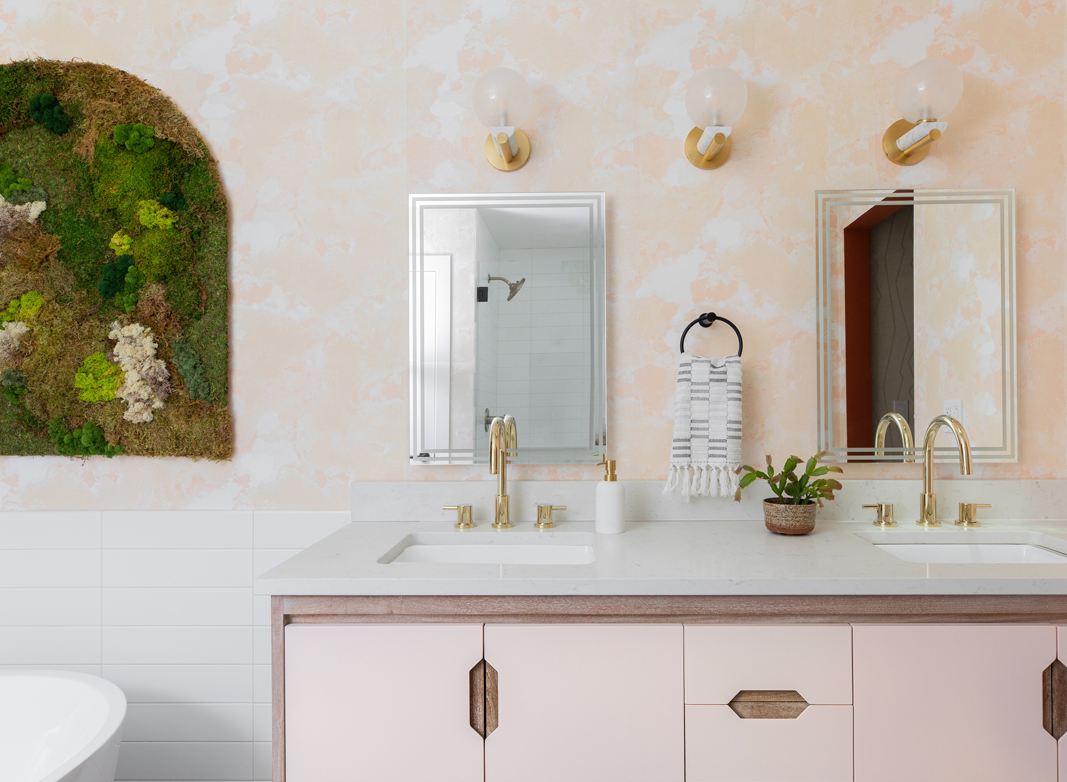photo above courtesy of Rebecca from @StudioPlumb using Autumn Path Wallpaper
Let Your Wallpaper Dry Properly
After installation, it’s important to allow your wallpaper and adhesive to dry completely before adding any protective layers. This typically takes about 24 to 48 hours. During this drying phase, it’s best to avoid using the kitchen or bathroom to prevent any damage before the wallpaper is fully protected.
Once your wallpaper has dried, the next step is to apply a decorators varnish. This varnish, like those used for wood, is specially formulated for different surfaces, including wallpaper. It helps shield against water damage, stains, and mould.
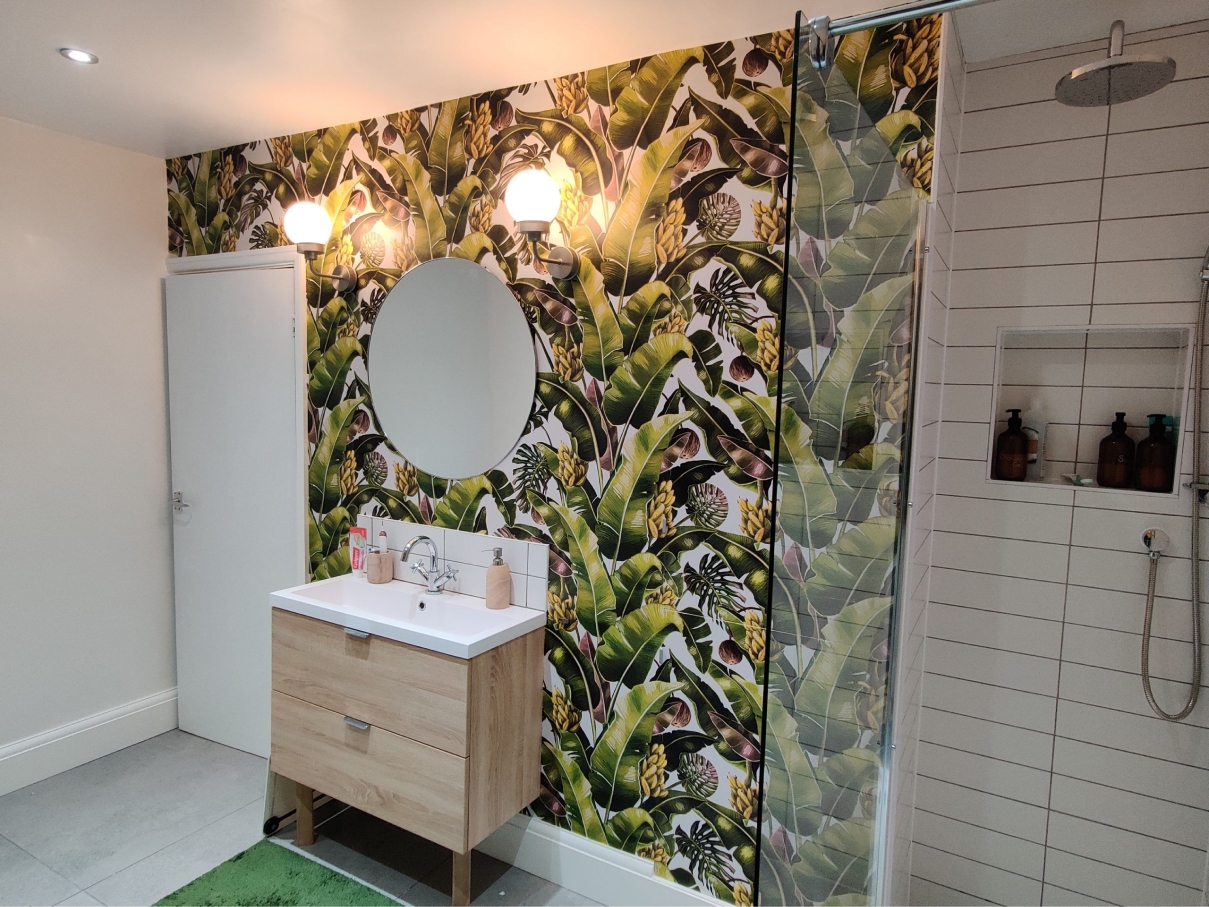
Photo courtesy of Michaela Livingstone-Banks
Applying a Protective Varnish
We spoke to Andrew Dillon, a seasoned painter and decorator with over 30 years of experience in Oxford. He shared insights from a recent project where he installed the Kingdom Palm Wallpaper in a client’s bathroom. To prevent discoloration, Andrew carefully applied three coats of dead flat matte varnish using a fine brush, creating an invisible seal. Decorators varnishes come in various finishes—high gloss, satin, and dead flat—so you can choose one that suits your style. The Polyvine Deadflat Varnish is see through, allowing the wallpaper’s design to shine through beautifully.
For maximum protection, a representative from Polyvine suggests on YouTube applying one coat of satin followed by two coats of dead flat varnish. The satin layer provides extra durability, while the dead flat layers keep the finish subtle.
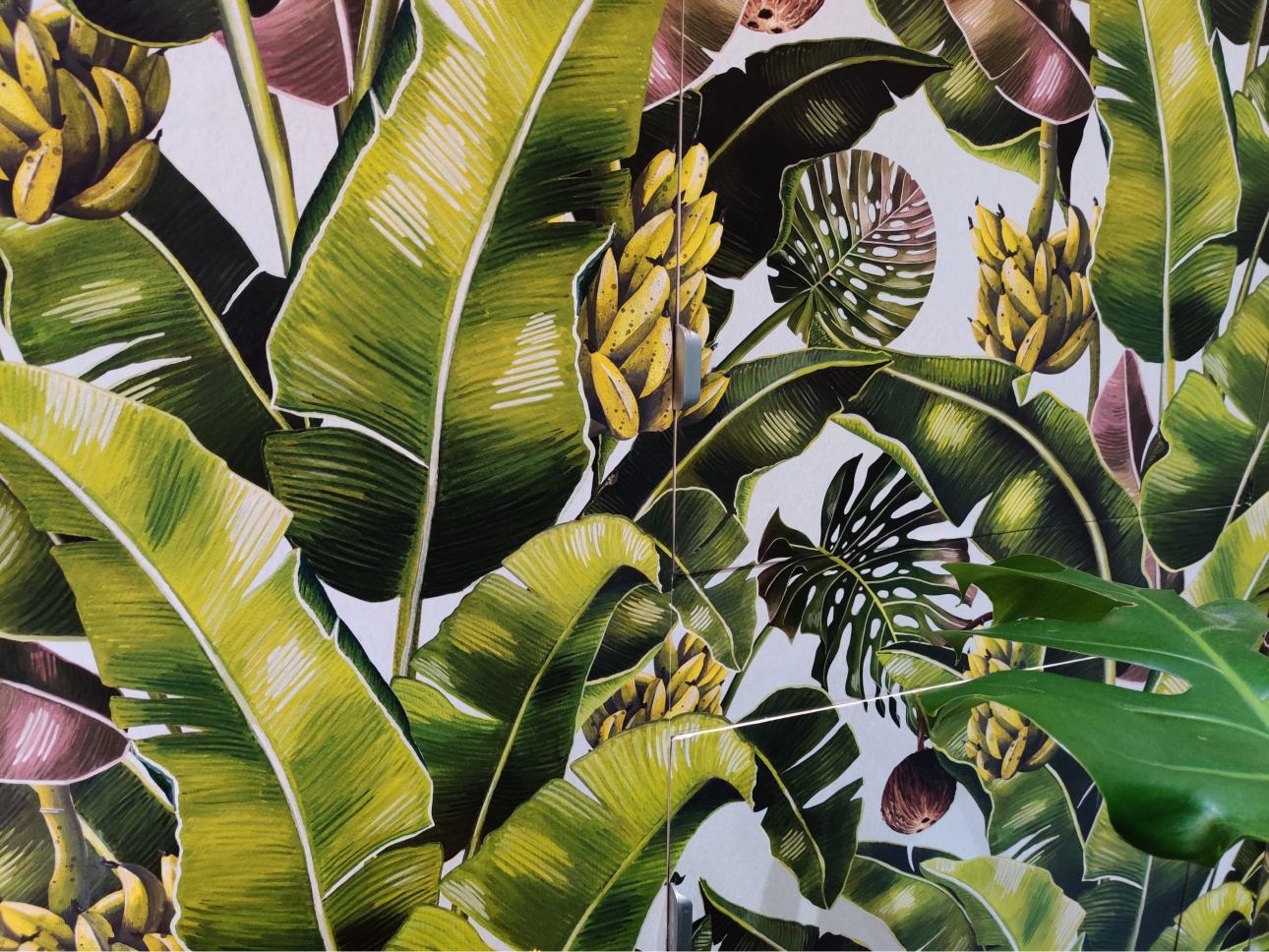
Photo courtesy of Michaela Livingstone-Banks
Waterproofing & Breathability
Non-woven wallpaper is desirable because it is breathable which makes it suitable for humid environments. However, it’s important to note that the breathability is also what makes it susceptible to water. Any sitting water can soak through the paper and cause the paste beneath it to weaken so the wallpaper starts to lift over time. So it’s important to note that waterproofing your wallpaper will inherently make your wallpaper no longer breathable or as removable. So, if you’re going to waterproof your wallpaper, be sure to use a mold-resistant paste and expect that the removal process is going to be much more difficult.
Learning how to waterproof your wallpaper is easy. However, If your bathroom is like most, where the wallpaper doesn’t come into direct contact with water and there is always an open door or window for ventilation, you shouldn’t run into any issues. Though, if some peace of mind comes from simply adding a few layers of varnish, we definitely recommend using a decorators varnish. This will ensure that you will be able to enjoy the beauty of your wallpaper for years to come.
